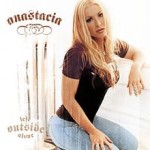 1. Anastacia, “Left Outside Alone” (2004):
1. Anastacia, “Left Outside Alone” (2004):
In 1999, Anastacia’s debut single, “I’m Outta Love,” and album, Not That Kind, were a spectacular success all over the world except in her native country, America, where the single did well on the dance chart but sputtered at a dismal #92 on the pop chart (Anastacia is originally from Chicago, but spent many years in New York, prior to getting signed to Sony Music). The project’s international success set a bewildering precedent for every subsequent Anastacia release: huge all over the world but only known in the clubs in U.S. Perhaps when an artist can’t break through in their native country we should call it the the Anastacia Effect. Because she was such a big star elsewhere, Sony was forced to release her work domestically, but always failed to replicate her success abroad. This often led me to wonder (and debate with industry friends) why American radio stations think the ears of Americans are somehow different. How else to explain their reluctance to play a song that was literally a hit in 19 countries? I believe if radio had played it, Left Outside Alone would have been a top ten hit here as well. An ear worm is an ear worm.
I was introduced to Anastacia in 2002 by a mutual friend and spent a good bit of time with her over the next few years, including attending an informal celebration of her engagement to a lovely black Englishman with the improbable name of “Wayne Newton.” We would try to get together whenever I was in L.A. or she was in New York. I recall one memorably bizarre night in 2002 when I took Anastacia and a large group of friends to see Liza Minnelli at Town Hall in her Liza’s Back show, a night most memorable for Liza’s completely sincere performance of Mary J. Blige’s “Family Affair.” In case you don’t remember, that’s the song that goes:
Let’s get it crunk, we gonna’ have fun
Up on in this dancery
We got ya open, now ya floatin’
So you gots to dance for me
Don’t need no hateration, holleratin’
In this dancery…
…and so on. This might be a propitious moment to pause and visualize Liza Minnelli singing the lyrics “hateration, holleratin’ in this dancery.” Say what you want about Liza, but after 5000 nights at Studio 54, would anyone be silly enough to dispute her opinions about appropriate behavior in a dancery? The audience at Town Hall that night certainly didn’t. Trust me, once you’ve heard Liza Minnelli sing “Family Affair” it is not easily forgotten. But I’m seriously digressing.
“Left Outside Alone” was release in 2004 and, after “I’m Outta Love,” was Anastacia’s biggest international hit, going Top-10 in every country in Europe and many other countries around the world. When I would travel abroad I observed that she was as big as Madonna. When I would talk about her in the states, people would say “who?” (except for the gays, naturally). I always told her she had the best of both worlds: to be a rock star playing to arenas all over the world and still have her privacy when she came home. I don’t think she agreed. Conquering America is every recording artist’s dream, no matter where they come from. In the brutal contraction of my music business career I lost touch with Anastacia, but I would bet that all her money and international success doesn’t compensate for radio’s baffling indifference here in the U.S. I would also bet, like me, she still conjures the memory of Liza Minnelli singing “Family Affair” when she is in a blue mood!
“Left Outside Alone” was written by Anastacia with Glen Ballard (Wilson Phillips, Michael Jackson’s “Man In The Mirror”) and—at least technically—Dallas Austin (T.L.C.). If U.S. radio had played “Left Outside Alone,” it would have been a monster, just like it was everywhere else. A hit is a hit and American ears are not impervious to hooks.
2. Beyonce, “Love On Top” (2011):
You know there are quality control issues afoot when a record is described as “retro” simply because it has a catchy melody, multiple modulations and a great vocal. Didn’t make a bit of difference to the Clear Channel computer in Texas that “Love On Top” happily reminded folks of Stevie Wonder or even that it went to number one on the R&B charts—the song peaked at a middling #20 on the pop chart.
Beyonce has always been an artist who wants it both ways: to keep her urban street cred with the hip-hop community (read “urban”) and to be the inheritor of the Diana Ross/Whitney Houston “great lady of popular music” (read “singing”). It’s been a bit of a juggling act that has created some fairly schizophrenic albums. Love On Top clearly fell into the latter category and did quite well in territories around the world, like South Korea, Hungary, and Belgium, places where I guess a great big, uplifting mid-tempo pop song isn’t so scary to radio programmers. Here at home it was a number one R&B record but here’s the thing: it’s a pop record—obviously—and the fact that pop radio was so luke-warm to this record is indicative of what amounts to a complete aversion to old-fashioned, melodic pop songs.
A few weeks back I was in a vintage clothing store and the sales girl was playing this song. “Do you like ‘Love On Top’?” I asked. “Ohmigod,” she gushed, “it’s the best, it just puts me in the happiest mood!” If I needed any proof beyond my own ears that this song should have been a huge pop hit (I don’t, for the record) this young woman’s feedback would have been far more meaningful then any corporation’s research! An average girl in an average store on an average day. Songs like “Love On Top” with big choruses used to pour out of cars, stores and restaurants, permeate the air, and form the soundtrack of our lives. No more.
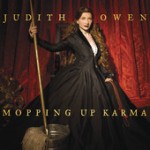 3. Judith Owen, “He’s Ordinary” (1999):
3. Judith Owen, “He’s Ordinary” (1999):
Welsh singer/songwriter Judith Owen is one of the music business’ best kept secrets. If you fancy Kate Bush or Tori Amos—and what reasonable person doesn’t?—you’ll love Judith. Married to This is Spinal Tap alumnus Harry Shearer, Owen has had more close calls with major crossover success than anyone I can think of, but has had to content herself with having a small but fervent audience and a beautiful all-white cottage in Santa Monica where she regularly holds musical salons—breezy, beachy, afternoon jam sessions with her famous friends. I was at several of those parties and will always remember Judith sitting at her white baby grand and singing duets with another one of my favorite singers who has had her own share of close calls with crossover success, Julia Fordham.
Perhaps Judith’s nearest brush with mainstream acceptance was the truly amazing album she made with the aforementioned Glen Ballard around 1999 for Universal Records. It was the usual music business story: record label regime change, “who’s her audience?”, “not young enough,” blah, blah, blah. The album never came out which was heartbreaking because it contained some of the pair’s best work. Judith finally released the tracks herself on 2008’s Mopping Up Karma. “He’s Ordinary” is not just one of my favorite songs from that collaboration, but one of my favorite songs period. By the way, it was hard to pick just one—”Let’s Hear It For Love” and “Creatures of Habit” are also first-rate. When I think back on my years working with songwriters, the chance to guide and protect artists as talented as Judith Owen is the thing I miss the most.
4. Doobie Brothers, “World Gone Crazy” (2010):
Did anyone other than me even know that the Doobie Brothers released something last year, let alone a track as good as “World Gone Crazy”? You certainly wouldn’t be able to tell on iTunes where new release “real estate” (industry lingo for visible placement) is apparently the sole province of the young and auto-tuned. Meanwhile back in Geezerville, the Doobie Brothers quietly reformed and released this extremely listenable album. The title song summons the spirit of Doobie classics like “Listen To the Music” and “Rockin’ Down The Highway”. Tom Johnston/Patrick Simmons-led “World Gone Crazy” was produced by the legendary Ted Templeman who was responsible for all the classic back-in-the-day Doobies albums and was not released as a single, though it probably wouldn’t have mattered a fig (or a doobie). Paradoxically, great pop records like this only seem to be made by country artists and come out of Nashville nowadays, but they used to just be considered Top-40. I wonder if “World Gone Crazy” could be a country hit if it were covered by a band like Little Big Town.
 5. Toploader, “Let The People Know” (1999):
5. Toploader, “Let The People Know” (1999):
In 1999 when I was slogging through my fourth or fifth “Songs That Will Be Hits” compilation for Clive Davis in a vain, endless attempt to win his favor, I spoke to a colleague in England who assured me that Toploader’s “Let The People Know” would be a stateside smash as well. In the final analysis the track peaked at a tepid #59 in the U.K. and wasn’t even released as a single in the U.S., though the band did have major global success with another single from their album Onka’s Big Moka, a cover of King Harvest’s “Dancing In The Moonlight.” The album sold 2 million units in their native U.K. Even though “Let The People Know” didn’t have much impact, I stand by my initial reaction to the single. What do you think?
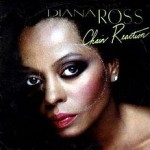 6. Diana Ross, “Chain Reaction” (1985, 1986):
6. Diana Ross, “Chain Reaction” (1985, 1986):
This one broke my heart. I’ve always been a huge fan of Diana Ross’ music both with the Supremes and as a solo artist. I also have tremendous respect for her historical position as an african american artist who broke racial barriers as she stormed the pop charts with a (still) record-breaking 12 number-one hits. If you’re a young person reading this, you simply can’t imagine how big Diana Ross was in the 1960s through the mid-1980s. Imagine Beyonce today and multiply it by two.
“Chain Reaction” was written and produced by the Bee Gees and was neatly placed on a continuum of mega-hits created by the Brothers Gibb for other artists, a still-impressive list which included “Guilty” for Streisand, “Heartbreaker” for Dionne Warwick and “Islands In The Stream” for Kenny Rogers and Dolly Parton. With “Chain Reaction” the brothers came up with a monster hook and a feel good groove that hearkened back to Ross’ sublime Supremes period; Barry Gibb said at the time that the Motown feel of “Chain Reaction” was a conscious attempt to conjur the spirit of her earlier records but with a contemporary spin. The resulting single was a hit literally all over the world, flying to number one in the UK, but RCA struggled with the song at American radio. I did my part, calling WPLJ and requesting the song, but the RCA promotion department and li’l ol’ me just weren’t enough to make the song connect with radio. The record was so big around the world that we all tried again a few months later when RCA re-released the single with a new mix, but I guess it was too late (and—to be completely honest—I never cared for the remix).
How much did I love “Chain Reaction” at the time? So much that I took the song to my group vocal performance class with the legendary Katie Agresta, where I proceeded to perform the song with just Daryl Kojak accompanying me on piano. A few bars into the performance I realized I had a big problem on my hands because a). the song is actually more of a record than a song—meaning it doesn’t sound like much without major production—and b). the lyrics were incredibly suggestive, which you don’t realize when you’re just listening to the record and tapping your foot, but becomes a major issue when you’re standing in front of a class of singers and Cyndi Lauper’s voice coach. Here is a sampling of what I tried to put over that cold winter night in January 1986, which will give you a sense of how ridiculous the whole thing was:
You make me tremble when your hand moves lower
You taste a little then you swollow slower
Here is the original “Chain Reaction” video, because it’s just an awesome period piece within a period piece:
 7. Nikka Costa, “Till I Get To You” (2001):
7. Nikka Costa, “Till I Get To You” (2001):
Poor Nikka Costa. In a nutshell, the R&B dynamo’s timing has been off, in the sense that there is no music business machine to support the great work this soulful dynamo has created. Scratch what I said about Judith Owen above: no one has circumvented big success more than Costa, who is known to everyone in the business. She was literally born into the record business—her father was the legendary arranger/producer Don Costa who worked with everyone from Sinatra to Bennett. When Nikka was five she recorded a song with Hawaiian pop star Don Ho and subsequently became a child star in territories around the world. Her first big hit in was a cover of Irene Cara’s “Out Her On My Own” from Fame in 1981 which spent 14 weeks at number one in Italy. That’s quite a bit of pasta!
Over the years she’s been signed to a series of major (and not so major) labels, recorded many songs that were included in big Hollywood films, written songs that have been covered by other notable artists like Eric Clapton, had a song featured in a Tommy Hilfiger ad, guested on an album by super-producer Mark Ronson, and toured with Lenny Kravitz. Along the way she migrated form a more pop sound to an authentic soul/funk vibe. With all this, household-name success has eluded her. Presently she is signed to Stax and still out there trying to make it happen.
I could have picked many Costa songs that would have fit nicely into the concept of “should have a been a top-10 hit,” but I chose “Till I Get To You” from the album Can’tneverdidnothin’ (2005) because it’s a total ear worm.
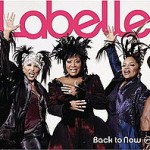 8. Labelle, “Roll Out” (2008):
8. Labelle, “Roll Out” (2008):
It’s hard to find enough superlatives to describe Patti Labelle as a performer or a person, and she was never more kinetic than when she was working with Nona Hendryx and Sarah Dash in Labelle. Known for their tight, soaring, harmonies and outlandish get-ups (I love saying “get-ups”!), the trio formed in Philadelphia in the early 1960s and first recorded as the Bluebelles, Patti Labelle and the Bluebelles and then, finally Labelle, scoring hits over the years with their doo-wop versions of “Over The Rainbow,” “You’ll Never Walk Alone,” and, of course, their signature song “Lady Marmalade,” before disbanding to pursue their solo careers in the mid-1970s.
The trio’s reunion album was produced by Lenny Kravitz, Wyclef John, and legendary Philly Soul team Kenny Gamble and Leon Huff, and was consistently fine. For me, two tracks stood out: the Wyclef-produced “Roll Out”, the first single which failed—naturally. Even with the playful use of the usually odious auto-tune (I grant a dispensation in this case), instead of rolling out, radio tuned out. The album peaked at a mediocre #45 on the pop charts and #9 R&B and deserved to be more widely heard.
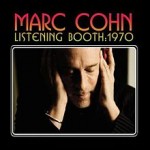 9. Marc Cohn, “The Letter” (2010):
9. Marc Cohn, “The Letter” (2010):
From the superb covers album Listening Booth: 1970. Marc Cohn is best known for his 1991 hit “Walking in Memphis,” which earned the singer/songwriter the Grammy for Best New Artist, (which is not always a significant portent—for every Bette Midler or the Beatles who received NARAS’ honor, is a Starland Vocal Band or Milli Vanilli).
Cohn’s inclusion in my list of 13 songs is more for a generalized indifference to his follow-up work than this album in particular, though I think it is a much better than average example of an album of cover songs. Listening Booth: 1970 is inspired by songs that an 11-year-old Cohn embraced in 1970, the first year he remembers truly connecting to the radio. I can relate: the first year I remember being aware of pop music was 1971 and my feelings around that year’s crop of hits is passionate and indelible.
Though cover albums are generally derided as a hail mary pass, (please note my uncharacteristic use of sports analogy) by desperate artists on the wrong side of the sales curve, I appreciate them when they’re well done because they allow young people to hear older songs, ostensibly giving them new life. This is the very essence of the music publishing business. I chose Cohn’s version of “The Letter,” because it fulfills my primary criteria for a worthy cover record: a vital reinterpretation that finds something new in the song (a great example of an inferior, completely unnecessary cover version would be Gloria Estefan’s “Turn The Beat Around,” which is essentially a recreation of the original 1976 version, with the only modification being the substitution of Vicki Sue Robinson’s thrilling, tangy vocal with the bland, mid-level wedding band vocal by Ms. Estefan).
Note: “The Letter” was originally recorded by Alex Chilton’s Box Tops in 1967 which would have made it technically ineligible for his concept album, but Cohn includes it here because he fell in love with Joe Cocker’s memorable 1970 version of the song.
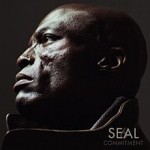 10. Seal, “I Know What You Did” (2010):
10. Seal, “I Know What You Did” (2010):
From the album known as Seal 6: Commitment, co-written, arranged, and produced by the great hit man David Foster. I admit to being a major Seal fan; the consistent quality of his songwriting, the sound of his voice, and the typical lush production are just two of the things I adore about his work and find it perplexing that he has had so few hit singles over the years. I chose this song because it was co-written by Foster, one of the greatest pop writers of the last 30 years, who very rarely writes anymore, but I could have chosen several other excellent cuts from the album like “Weight of My Mistakes” or “If I’m Any Closer.”
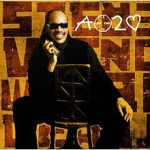 11. Stevie Wonder, “A Time To Love” (2005):
11. Stevie Wonder, “A Time To Love” (2005):
Here’s a bold statement: from the very moment the legendary Stevie Wonder broke away from the Motown staff writers and producers and asserted himself creatively with 1971’s Where I’m Coming From, there was nary a false moment or less than exquisite second in any of his work through 1982’s Original Musicquarium. Consider his output during this period: Music of My Mind, Talking Book, Innvervisions, Fulfillingness’ First Finale, Songs In The Key of Life, and Hotter Than July. If Stevie had musically gone no further than 1982, not even including his awesome early Motown work and hit or miss later work, he would have to be considered one of the most significant pop artists ever.
The problem with setting the bar so high is that it gets harder and harder to live up to expectations. If Wonder’s increasingly sporadic post-Musicquarium output suffered from fewer moments of muscical rapture, careful listeners will be rewarded with the occasional musical gem. Just a few outstanding tracks in his less glittery recent decades would include “Overjoyed” from In Square Circle (1986), “My Eyes Don’t Cry” from Characters (1987), “Make Sure You’re Sure” from the Jungle Fever Soundtrack (1991), and an astonishing cover of Bob Marley’s “Redemption Song” from a mid-90s greatest hits album, to name just a few.
In recent years, Wonder’s output has slowed even more, so expectations were probably unmanageably high by the time he released A Time To Love in 2005. This sort of pressure can produce a kind of stasis while the artist labors and gets lost in second guessing himself. The finished album—which took years to complete and was pushed back repeatedly—is not at the level of his greatest work but nevertheless contained a few classic “Stevie Wonder moments.” My favorite among them is the title track, a nine-minute opus that features India.Arie on vocals and former duet partner Paul McCartney on guitar. “A Time To Love” was not a great success but deserved better than it got, and with a clever radio edit should have joined the joyful list of Stevie Wonder classics.
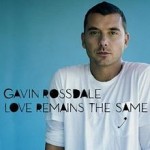 12. Gavin Rossdale, “Love Remains The Same” (2008)
12. Gavin Rossdale, “Love Remains The Same” (2008)
Odd that the biggest hit of Bush’s hard-rocking frontman Rossdale’s career peaked at #27 on the pop chart. This is exactly the kind of ballad that would have been a top-10 hit in the 1990s. In fact, it’s not hard at all to imagine “Love Remains The Same” as the end-title theme from a Julia Roberts or Meg Ryan rom-com. Remember ballads at the end of films?
And my honorary William Wyler 13th song with which I have a personal connection. So, with apologies:
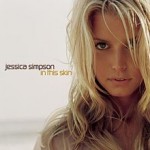 13. Jessica Simpson, “I Have Loved You” (2003):
13. Jessica Simpson, “I Have Loved You” (2003):
When I first began running Denise Rich’s music publishing company, I poured through the hundreds of songs in the socialite’s catalogue in search of a few overlooked songs that I felt had the potential to get cut or, if they’d already been recorded, covered again. Because Denise had spent her most prolific songwriting years chasing radio trends, my job was made much harder than it might have been if her strategy had been less vulnerable to the prevailing winds of whatever happened to be popular at a given moment. Nevertheless I did find a few nuggets.
One of Denise’s finest “trunk songs” was “I Have Loved You,” a well-crafted mid-tempo ballad which Denise had co-written with Nashville greats Holly Lamar (Faith Hill’s “Breathe”), and Greg Barnhill (Trisha Yearwood’s “Walkaway Joe”). The song had originally been written as the end-title theme for the 2001 Michael Bay/Jerry Bruckheimer film Pearl Harbor—hence the song’s flying imagery (“if wings take you away from me”)—in Denise’s never-ending quest to win an Oscar. According to Denise’s narrative, which may or may not be apocryphal, Bay and Bruckheimer “loved my song and were committed to it. Faith Hill was going to sing it. Then Diane Warren came along with that song of hers [“There You’ll Be,” which was recorded by Hill and received both Oscar and Golden Globe nominations] and took my Oscar!” If I’m to believe Denise, my current and former bosses fought a celebrity death match and Diane Warren won. No big surprise there.
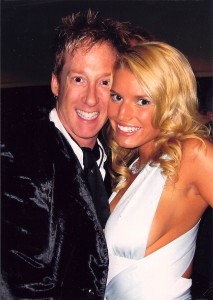
I endeavored to make lemonade out lemons when I became acquainted with “I Have Loved You”—I thought it was first-rate—and suggested it to Jessica Simpson over lunch at the Peninsula Hotel. She also loved it, responded to it immediately, and came up to our studio to cut a vocal track the next time she was in New York, which I co-produced over the original demo track. Not one to labor over details—Jessica’s attention span was something less than academic—we got a passable vocal in about 45 fleeting minutes and were able to comp together the finished version.
Apparently we came very close to being the third single on her album In This Skin, but at the last minute Jessica’s label changed their mind and, I believe, went with her insipid cover of Berlin’s Giorgio Moroder ballad “Take My Breath Away” from Top Gun. Then the label told us we were going to be the fourth single, but then they changed their mind yet again and went with Jessica’s even more insipid cover of Robbie Williams’ “Angels.”
It wasn’t the end-title theme to a major film Denise was looking for, but an album cut on a triple platinum album is nothing to sneeze at. Additionally, Denise got the opportunity able to enjoy another small consolation: hearing her song performed live at Radio City Music Hall when Jessica’s tour came to town later that year, and a lovely shout out from the stage.
You may also enjoy:
Songs That Should Have Been Top Ten Hits, Part One
Songs That Should Have Been Top-Ten Hits, Volume Three: The Clive Davis Edition
Songs That Should Have Been Top-Ten Hits, Volume Four: The Elton John Edition

About Mark Ashkenazi:
About Mark AshkenaziMark, an photographer & graphic artist, based in Israel, focus on eclectic mediums.
Mark’s portfolio ranges from eye-catching nude art ,pop art, comics and cartoons to portraits and colorful animal art.
‘Each piece of artwork showcases my feelings and thoughts in the moment’
https://www.facebook.com/Mark-ashkenazi-1690812511176155/
email: markashkar1972@gmail.com






Matt
November 19, 2012 at 8:09 pmOMG, David!! Love “Love On Top” …. I go crazy at the end when it keeps modulating and Beyonce keeps going up the scale. Fantastic song!
David Munk
November 21, 2012 at 4:56 pmI agree Matt — thanks for checking in, btw!